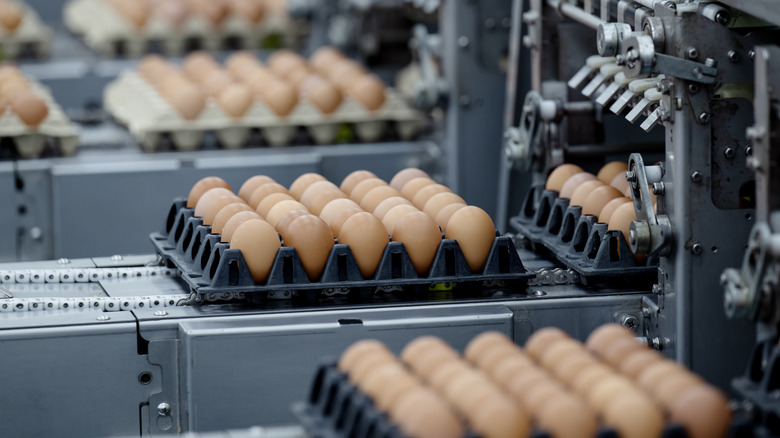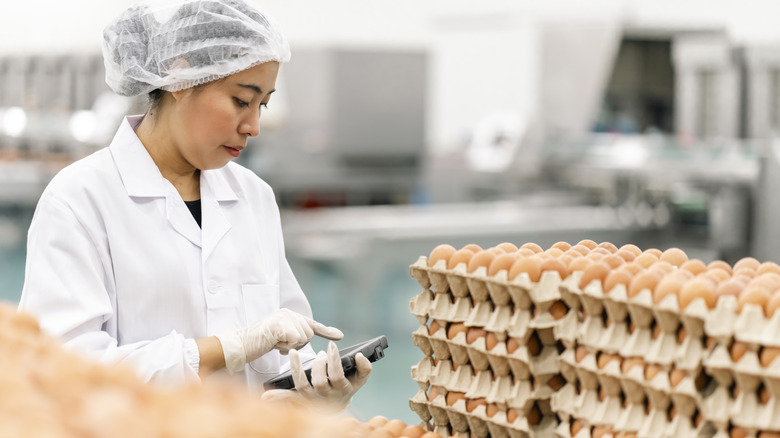The US State That Produces The Most Eggs
Unless you have an allergy, you have likely eaten too-many-to-count eggs in your lifetime, prepared in all sorts of dishes. As one of the kitchen staples in nearly every household, eggs are part of the average American diet. This is mostly because eggs are incredibly versatile. You can fry or boil them for breakfast, use them in baking bread and pastries, or simply top a salad or stir-fry with. You can even repurpose leftover hard-boiled eggs with the right recipe. And with the demand steadily rising amid the falling egg prices, have you ever wondered where most of the U.S. egg supply actually comes from?
The state of Iowa is the leading egg producer in the country, boasting more than 45 million laying hens. In January 2025, Ohio replaced Iowa as the state with the most egg layers (39.9 million vs. 39.4 million), but it was forced to eliminate around 15 million birds due to avian influenza. Despite that fluctuation, the scale of production from the top two states alone is undeniably staggering, especially when you consider that a single hen can roughly lay 301 eggs per year (as of the latest data).
To put things in perspective, the U.S. produced approximately 93.1 billion table eggs in 2024. Between 2023 and 2024, Americans ate 281.3 to 284.4 eggs per person. Interestingly, the U.S. only ranks third globally in total egg consumption, with China and India placing first and second, respectively.
How Iowa became the top egg-producing state
Iowa has held its status as the top egg producer in the United States for many years and a number of reasons. As far back as 2018, Iowa reportedly housed 49.3 million hens that produced 14 billion table eggs, and just three years later, the state recorded 58 million laying hens and an estimated 17.1 billion eggs. And it's maintained its lead despite numerous difficulties, most notably the avian flu outbreak, which forced Iowa to cull around 6.7 million laying hens by December 2024.
However, Iowa was able to fight back by quickly adopting guidelines from the United States Department of Agriculture (USDA) and the Centers for Disease Control and Prevention (CDC). The Iowa Department of Agriculture and Land Stewardship also reinforced biosafety measures, upgrading egg producing facilities and taking numerous other precautions to ensure the health of its poultry industry, which employs more than 11,000 people.
Iowa's egg industry also has unique factors that support its top status. The state population has risen by 1.34% since 2021, and maintained a steady per capita rate of egg consumption (282 eggs per Iowan per year), both of which have required egg industry expansion. Iowa also has lower feed costs than other states thanks to its agricultural industry, which produces a significant amount of corn and soybeans. The state is also involved heavily in "broken" or processed eggs, which are eggs that are converted into frozen, dried, or liquid form. These eggs require less money for labor and transportation while remaining applicable to any number of food products that require eggs.

